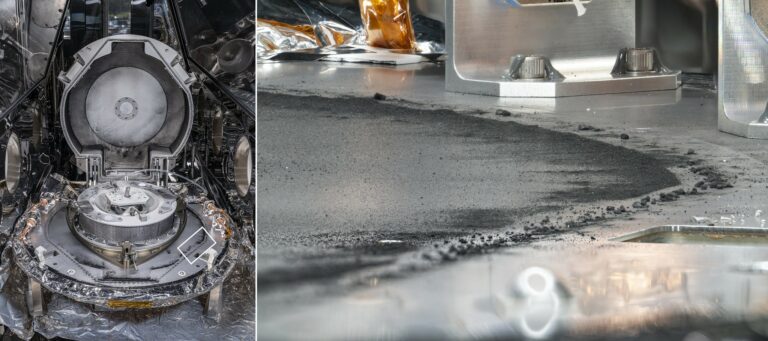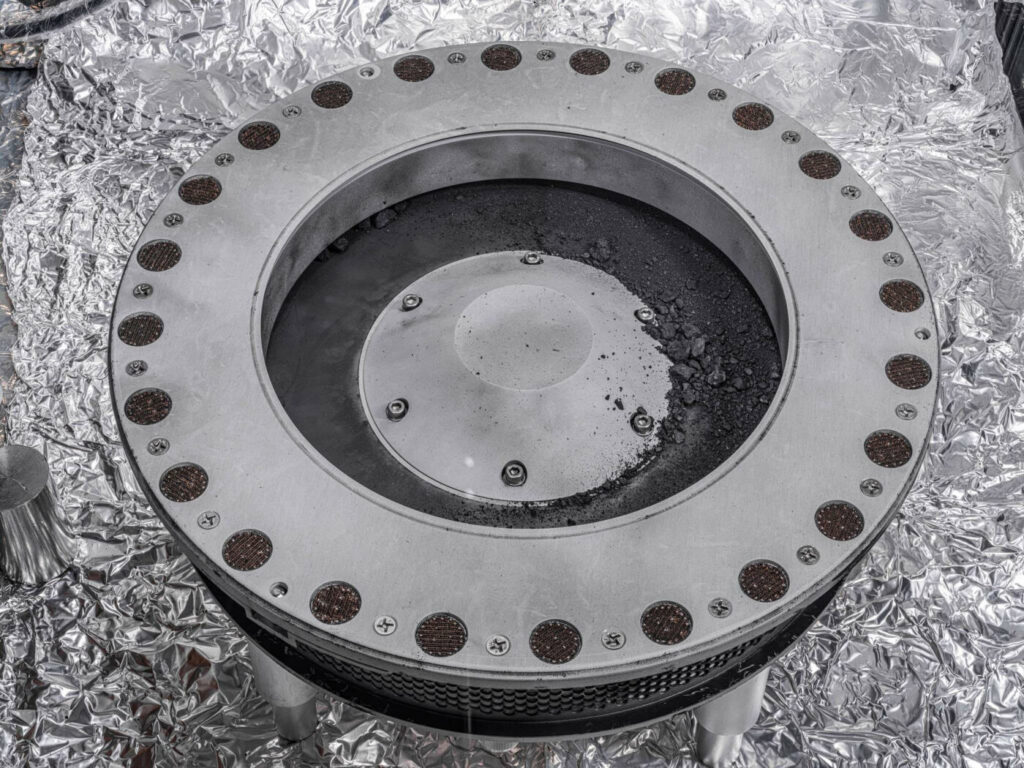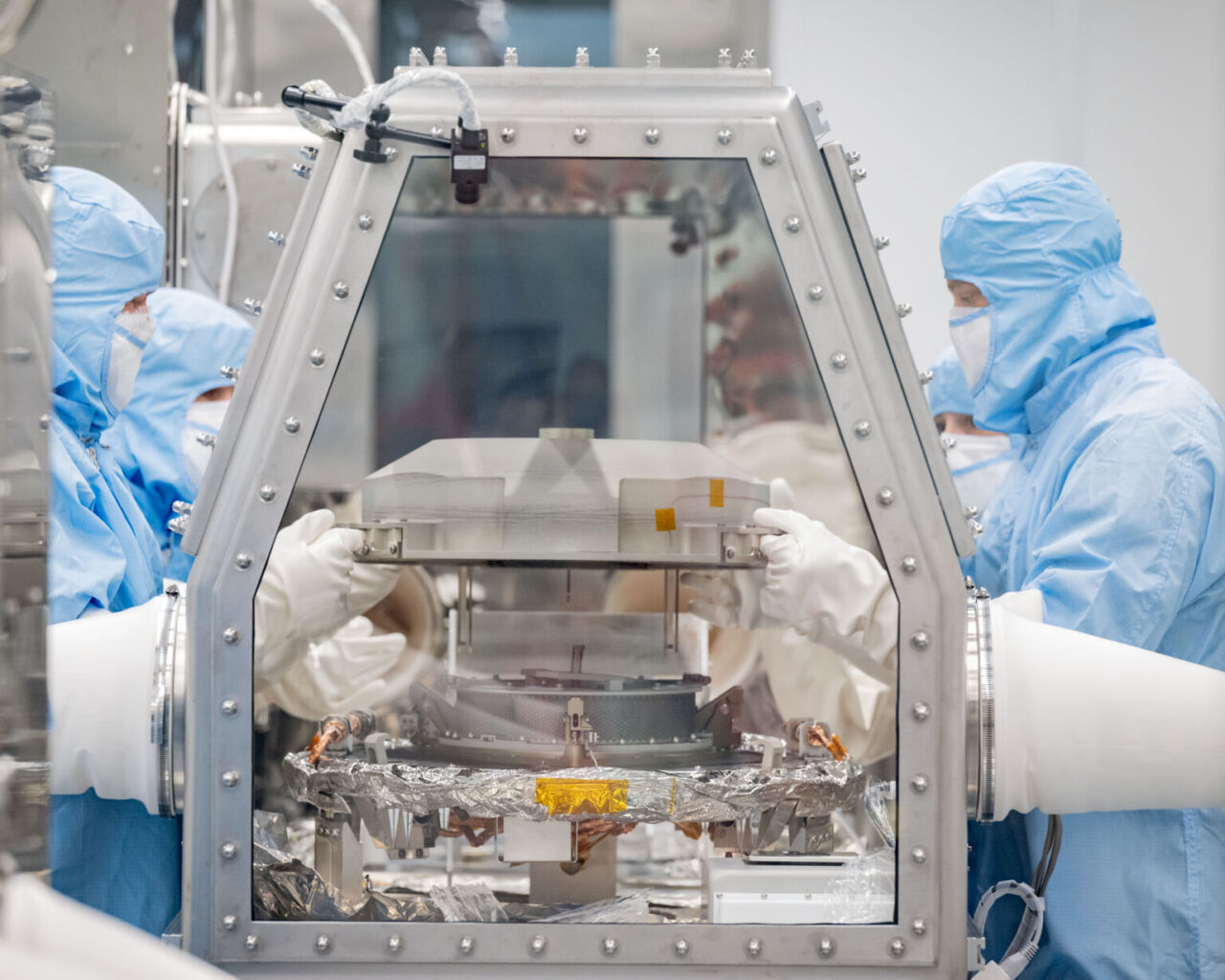Breaking News: On September 28, 2023, scientists celebrated a momentous occasion as they carefully cracked open the sample return capsule from the OSIRIS-REx mission, revealing the precious asteroid material collected from Bennu. This treasure trove, now safely at NASA’s Johnson Space Center, holds the potential to unlock mysteries about the early solar system and the possibility of life beyond Earth.
The OSIRIS-REx sample is a precious treasure trove of information about the early solar system. Scientists believe that asteroids like Bennu are the building blocks of planets, so studying this sample could help us learn more about how our planet formed. The sample could also offer insights into the origins of life on Earth, as scientists believe asteroids delivered organic molecules to our planet early in its history.
More Than Just a Canister: A Journey Through Time
The OSIRIS-REx sample canister isn’t just a container; it’s a time capsule holding material untouched for billions of years. Bennu, a primitive asteroid formed in the dawn of the solar system, offers a snapshot of that early era. By studying the samples within, scientists hope to answer fundamental questions about our cosmic neighborhood:
- Composition of Bennu: Understanding the types of rocks, minerals, and organic molecules present unveils Bennu’s formation and evolution. It can also identify potential resources for future space exploration.
- Origins of Life: The presence of organic molecules, the building blocks of life, on Bennu raises intriguing possibilities. Were asteroids like Bennu crucial in delivering these vital ingredients to Earth’s early surface?
- Evolution of the Solar System: Bennu preserves pristine materials unaffected by Earth’s processes. Analyzing these samples can unlock secrets about planet formation and the overall solar system’s history.
- Life Beyond Earth: Organic molecules and water discovered on Bennu suggest past or present life could be hiding there. Identifying biomarkers in the samples would revolutionize our understanding of life’s distribution in the universe.
Opening the Treasure Trove: A Delicate Operation

Unveiling the sample was a painstaking process. Each layer – the outer shell, the contamination shield, and the inner canister – held its own challenges. Scientists meticulously removed them, ensuring the precious cargo remained pristine. Finally, in a controlled environment, the inner canister revealed its secrets: over 2 ounces of Bennu’s surface material, ready for analysis.
Early Discoveries: Unveiling Bennu’s Secrets
Scientists have already made significant discoveries, highlighting the importance of the OSIRIS-REx mission:
- Rich Diversity of Organic Molecules: Amino acids, the building blocks of proteins, have been identified, suggesting Bennu’s role in delivering life’s ingredients to Earth.
- Abundant Evidence of Water: Both hydrated minerals and trapped molecules confirm the presence of water on Bennu, crucial for life as we know it.
- Potential Resource Availability: Valuable minerals like nickel and iron offer exciting possibilities for future space exploration endeavors.
- Preserved Organic Matter: Bennu’s low temperature and radiation environment protected organic molecules for billions of years, offering insights into early solar system chemistry.
Looking Ahead: Years of Exploration and Discovery

Analyzing the OSIRIS-REx sample is a marathon, not a sprint. Scientists around the world will utilize various techniques to unravel its secrets, including:
- Detailed Compositional Analysis: Identifying the specific types and abundances of molecules present in the sample.
- Organic Molecule Characterization: Understanding the nature, origin, and potential for prebiotic chemistry of the organic molecules found.
- Water Source Determination: Pinpointing the source of water on Bennu, whether internal or delivered by external sources.
- Biomarker Search: Looking for chemical signatures that could indicate past or present life on Bennu.
Beyond Exciting Discoveries: A Legacy for Future Generations
The OSIRIS-REx sample is more than just a collection of particles; it’s a legacy for future generations. It represents a giant leap in our understanding of the early solar system, the potential for life elsewhere, and our place in the universe. The discoveries made from this sample will continue to inspire exploration, ignite curiosity, and fuel scientific progress for years to come.
ALSO READ: ‘I LITERALLY BROKE INTO TEARS’: THE SCIENTIST’S GREATEST DAY WITH OSIRIS-REX
Frequently asked questions
What is OSIRIS-REx?
OSIRIS-REx stands for Origins, Spectral Interpretation, Resource Identification, and Security – Regolith Explorer. NASA launched this mission in 2016 to study the asteroid Bennu and collect a sample of its surface material.
Why study Bennu?
Bennu is a near-Earth asteroid that is thought to be a primitive object. This means that it has not changed significantly since it formed early in the solar system. By studying Bennu, scientists can learn more about the early solar system and the formation of planets.
How did OSIRIS-REx collect the sample?
In October 2020, OSIRIS-REx extended a robotic arm and touched the surface of Bennu. The arm collected a sample of the asteroid’s surface material and then retracted back into the spacecraft.
What is the sample canister?
The sample canister is a specially designed container that is designed to protect the asteroid sample from contamination. The canister is made of a material that is impervious to air and water. It also has a special filter that prevents any bacteria or other microorganisms from entering the canister.
How will scientists study the sample?
Scientists will use a variety of techniques to study the OSIRIS-REx sample. They will use imaging techniques to study the sample’s structure. They will also use chemical analysis techniques to determine the sample’s composition. Finally, they will use radiometric dating techniques to determine the sample’s age.
The impact of the OSIRIS-REx sample on science
The OSIRIS-REx sample is expected to have a significant impact on science. By studying this sample, scientists can learn more about the early solar system, the formation of planets, the origins of life on Earth, and the potential for life beyond Earth.
Here are some of the specific ways that the OSIRIS-REx sample could impact science:
Help us to understand the formation of planets. Asteroids like Bennu are thought to be the building blocks of planets. By studying the OSIRIS-REx sample, scientists can learn more about the composition and structure of these early building blocks. This information could help us to better understand how planets formed and evolved over time.
Provide insights into the origins of life on Earth. Asteroids are thought to have played a role in the delivery of organic molecules and water to early Earth. By studying the OSIRIS-REx sample, scientists could learn more about the types of organic molecules that were present on Bennu and other asteroids early in the solar system. This information could help us to better understand how life originated on Earth.
Help us to search for life beyond Earth. Asteroids like Bennu could potentially harbor life or prebiotic chemistry. By studying the OSIRIS-REx sample, scientists could search for signs of life or prebiotic chemistry. This information could help us to better understand the potential for life beyond Earth.
The future of the OSIRIS-REx sample
The OSIRIS-REx sample will be studied by scientists from around the world for many years to come. The sample is expected to provide new insights into the early solar system, the formation of planets, the origins of life on Earth, and the potential for life beyond Earth.
